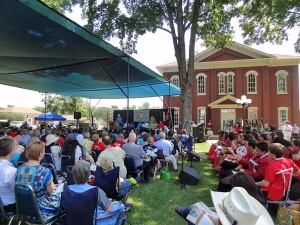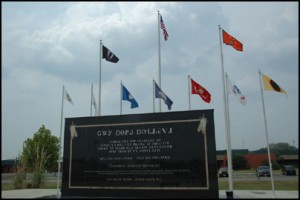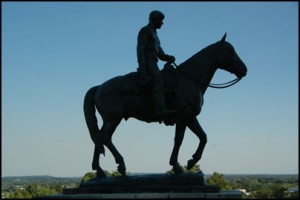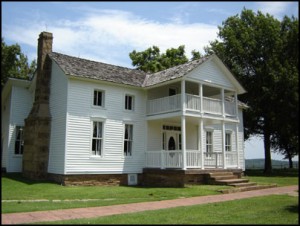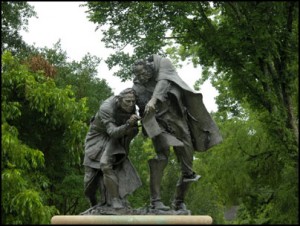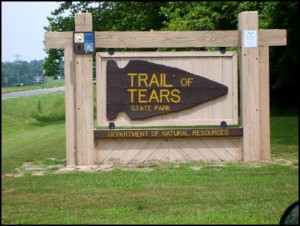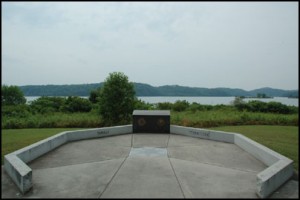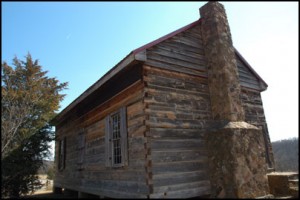Every year on Labor Day weekend over 100,000 visitors travel to the town of Tahlequah, Oklahoma to celebrate a uniquely Cherokee event — Cherokee National Holiday, also referred to as Cherokee Homecoming. The normally small town of just over 16,000 people welcome Cherokee and non-Cherokee from all over the world with festivities to celebrate the
Genealogy Queries for "travel"
Veteran Warrior’s Memorial
All Gave Some…Some Gave All. The Cherokee Warrior Memorial is a veteran’s memorial located on the grounds of the Cherokee Nation headquarters. The moving memorial includes a black granite wall inscribed in both Cherokee and English with, “A grateful Cherokee Nation dedicates this memorial to all Cherokee men and women, both living and dead, who
Will Rogers Memorial
On November 4, 1879, William Penn Adair Rogers was born in Oologah, Cherokee Nation, Indian Territory. The son of a Cherokee senator, judge, and cattleman, Will Rogers grew up to become one of the most famous and popular world figures of his time. He first gained attention with his roping talent, and was even listed
Will Rogers Birthplace
On November 4, 1879, William Penn Adair Rogers was born in this house in Oologah, Cherokee Nation, Indian Territory. The son of a Cherokee senator, judge, and cattleman, Will Rogers grew up to become one of the most famous and popular world figures of his time. He first gained attention with his roping talent, and
Treaty Sculpture
In February of 1836, the revolution in Texas was troubled as Santa Anna and 6,000 Mexican troops marched toward the Alamo to crush the ill-equipped Texas army and their fledgling government. Sam Houston, a leader of the Texas revolution needed the guarantee of Indian neutrality in order to focus his army’s attention on the fight
Treaty of Holston Park
With the erosion of the Treaty of Hopewell (1785) the Cherokee saw their boundaries invaded by US settlers. The Chickamuaga group of Cherokee, led by Dragging Canoe, were in revolt, raiding white settlements and leaving all of the Cherokee vulnerable to retribution attacks. In 1791 the Treaty of Holston was signed in an effort to
Trail of Tears State Park
In 1830 the US Congress, at the behest of President Andrew Jackson, passed the “Indian Removal Act.” With this act, the US intended to remove all Indian people to Indian Territory, land west of the Mississippi River. The majority of the Cherokee people opposed removal, but a small group of Cherokee known as the Treaty
Tanasi
Along with neighboring Chota, Tanasi was one of the two Overhill towns recognized as a “capital” of the Cherokee Nation during the 1700s. However, to most it is best known as the namesake for the state of Tennessee. The spelling variation of Tennessee first appeared on a map in 1762. Later in 1796, the nation’s
Tahlonteeskee
Just outside of Gore, Oklahoma is a reconstruction of a Cherokee council house and courthouse from the 1829 capital of Tahlonteeskee. This site is just south of the actual site of Tahlonteeskee (now on private property). The Tahlonteeskee settlement was established in 1827 as the seat of Cherokee government in Indian Territory when the western
Saline Courthouse
Long before the famous Trail of Tears there were Cherokee already living in Indian Territory. The “Old Settlers” had started settling in Indian Territory in 1817. These Old Settlers set up their own capital, council and court system. The court system was made up of several district courts. When the Eastern Cherokee arrived in Indian
